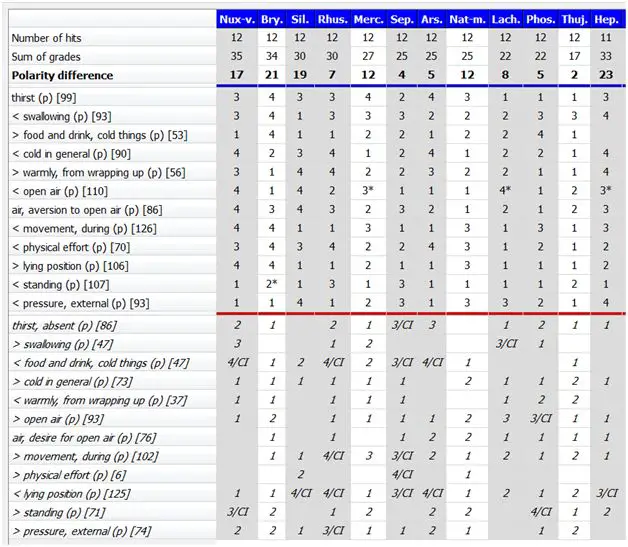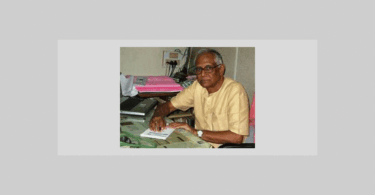The other song – International Academy of Advanced Homoeopathy has always been a platform for sharing and exchanges of ideas and advances in the field of Homoeopathy. The institute’s open-minded approach to all schools of thought in the field has made it immensely popular among students as well as practitioners of the science. To enhance this purpose of promoting the best approaches and learning from them, the other song had organized a seminar with the renowned international homoeopath, Dr. Heiner Frei on its premises on the 15th February, 2015, Sunday.
 Dr. Heiner Frei is a pediatrician in Laupen, Switzerland. After clinical training as a pediatrician and hematologist and oncologist he started practicing Homoeopathy 27 years ago. In 2005, he has become internationally known as the author of the rigorous Swiss ADHD double blind study, which led to a significant difference between homoeopathic remedies and placebo. For this trial he developed Polarity Analysis, a new method to improve the precision of homoeopathic prescriptions. He has published books on ADHD and on Polarity Analysis in German and English. For his research, Dr. Frei received several scientific awards.
Dr. Heiner Frei is a pediatrician in Laupen, Switzerland. After clinical training as a pediatrician and hematologist and oncologist he started practicing Homoeopathy 27 years ago. In 2005, he has become internationally known as the author of the rigorous Swiss ADHD double blind study, which led to a significant difference between homoeopathic remedies and placebo. For this trial he developed Polarity Analysis, a new method to improve the precision of homoeopathic prescriptions. He has published books on ADHD and on Polarity Analysis in German and English. For his research, Dr. Frei received several scientific awards.
In the seminar, Dr Frei introduced the concept of Polarity Analysis, helping the participants solve acute and chronic cases with this approach to a point that enabled them to use it scientifically in their practice.
Polarity analysis (PA) is a method that leads to an efficient and reproducible choice of remedy and increases the precision of prescriptions. It is a development of Boenninghausen’s concept of contraindications. It serves to determine in individual disease a healing probability for each homeopathic medicine in question. Polarity analysis is based on the revised edition of Boenninghausen’s Therapeutic Pocketbook, an exceedingly reliable repertory. Dr Heiner Frei has taken the concept of contraindication of Boenninghausen and developed the method of polarity analysis to solve acute as well as chronic cases. When choosing a remedy Boenninghausen strived to match the patient’s set of symptoms and especially the modalities as closely as possible to the ‘genius’ of the remedy. The genius of a remedy includes the modalities, sensations, and clinical findings that have repeatedly appeared in the provings at different locations and have been healed by this remedy. These are in fact the characteristics of a remedy.
This system is based on the understanding of polar symptoms and gradation in remedies. Polar symptoms are those symptoms that have an opposite aspect, an “opposite pole” such as thirst / thirstlessness, cold aggravates / cold ameliorates, desire for fresh air / dislike of fresh air. A patient can have only one pole of a polar symptom. He is either thirsty or thirstless. Since the symptom set of a remedy is composed of the observations of several provers, a remedy can possibly cover both poles.
Normally these poles stand in different grades: If five provers have observed thirst, and thirst has been healed by the remedy, thirst stands in third grade. If in addition one prover has observed thirstlessness in the same remedy, thirstlessness will stand in first grade. In order to select the remedy we must understand what ‘Polarity Difference’ is and how do we calculate it.
The polarity difference indicates the level of congruence between patient symptoms and homoeopathic remedy. The higher this polarity difference, the more the remedy corresponds to the patient’s characteristic symptoms, assuming there are no contraindications.
In order to calculate the polarity difference for each remedy the grades of all polar patient symptoms are added.
The grades of the corresponding opposite symptoms are subtracted from the resulting sum. The result is the polarity difference (PD). Here is an example of repertorization using polar symptoms in Boenninghausen repertory:
With this, we can interpret that higher the polarity difference, the better the match between patient symptoms and remedy, and the more likely the remedy will heal. According to the approach of polarity analysis, the criteria for the choice of the remedy are – the size of polarity difference, no contraindications, completeness of coverage of polar symptoms.
Working tools which are to be used for case solving with polarity analysis is Software of Boenninghausen‘s Therapeutic Pocketbook 2000, Polarity Analysis Checklists and Questionnaires (free download from www.heinerfrei.ch) A dictionary of the materia medica, Textbook: Heiner Frei, Polarity Analysis in Homeopathy, a Precise Path to the Similimum.
In order to help understand and apply this method better, Dr. Heiner Frei demonstrated a few of his cases which were successfully treated using this analytical approach. One of the cases he presented was of a child whose troubles began three days before consultation with a mild sore throat. Since then he had developed a headache and pain in the limbs, as well as a high temperature of 39.4 °C (102.9 °F). He was very weak, could hardly swallow and tolerated only cold food.
The examination revealed a bright red throat, severely swollen tonsils, and petechial bleeding on the palatal arch. His tongue was bright red, the cervical lymph nodes were severely swollen and painful, and tenderness over abdomen on palpation. The provisional diagnosis was streptococcal tonsillitis. The diagnosis of scarlet fever would also require the presence of the characteristic skin rash with light speckling of small, slightly raised bright red spots. His skin showed that the exanthema had already formed.
Using the Checklist for Ear-Nose-Throat and Eye, the mother picked the following symptoms:
- Mouth odour
- Dry mouth
- Thirst – P
- Swallowing: worse – PFood and drink, cold things: better – P
- Cold in general: worse – P
- Warmly, from wrapping up: better – P
- Open air: worse – P
- Air, aversion to open air – P
- Movement: worse – P
- Physical effort: worse – P
- Lying position: better – P
- Standing: worse – P
- Pressure, external: worse – P
The references to the chart are as follows:
- The remedies are ordered according to the number of hits.
- Symptom descriptions: < = worse; > = better
- Polar symptoms are marked with (p).
- The number after the symptom in square brackets (for example, thirst [99]) refers to the number of remedies matching the symptom. This information is important because it shows how strongly the choice of remedy is restricted by the use of the symptom rubric.
- Patient symptoms: these are listed underneath the blue line and above the red line.
- Opposite poles: these are shown in italics and are found below the red line.
- Calculation of the polarity difference: the grades of the polar patient symptoms of a remedy are added up. From this total, the sum of the grades of the opposite poles listed for the remedy were subtracted; the result is the polarity difference (example: Nux vomica 35-18=17).
- Contraindications, CI: The opposite poles at the genius level (grades 3-5) are compared with the grades of the patient’s symptoms. If the patient’s symptom has a low grade (1-2) but the opposite pole is listed for the remedy with a high grade (3-5), the genius of this remedy does not correspond to the characteristics of the patient’s symptom; the remedy is therefore contraindicated.
- Example: when checking Nux vomica, we find that the patient’s symptom > food and drink, cold things is listed at the 1st grade whereas the opposite pole < food and drink, cold things is listed for the remedy at the 4th grade. In other words, < food and drink, cold things is a genius symptom of Nux-vomica. Therefore Nux vomica does not fit the patient’s symptoms and is contraindicated. Columns with contraindications CI are shaded grey so that we can instantly see which remedies are contraindicated.
- If we repertorize just the polar symptoms, eleven remedies completely cover all symptoms, four of them without contraindications, but with greatly varying polarity differences (Bry 21, Merc-s 12, Nat-m 12, Thuj 2). If we include the scarlet fever rash in the repertorisation, only Bryonia and Mercurius solubilis
The child was given Bryonia 200 C due to the large polarity difference. In the following night, the child still had a slight fever. The next morning, twelve hours later, the throat pain and headache had completely disappeared.
In this case, the patient would have received Bryonia even without a materia medica comparison, since the genius of the remedy, expressed in the very high polarity difference, far more comprehensively and specifically matched the modalities than Mercurius solubilis.
Another case example of a gentleman who came for an emergency consultation. His current illness began two months ago after a walk in stormy weather. He suffered general joint pains and tension in the neck and shoulder that he could hardly turn his head; even swallowing was painful. He also had general symptoms, especially a feeling of heat in the entire body and outbreaks of sweating with an inclination to uncover. He feared having a serious illness, and he came to a pediatric homeopath, to avoid undergoing aggressive conventional medical treatment.
On examination he appeared a tense, thin and pale patient with a poor general condition, who attempted to conceal his anxiety by cracking jokes. The muscles in the area of the shoulder and neck were tense on both sides and the rotation of his head was restricted. The most probable clinical diagnosis was sub-acute rheumatic polymyalgia.
With the Questionnaire for the Musculoskeletal System, the patient underlined the following symptoms:
- Clammy muscles
- < Cold in general – P
- < Uncovering – P
- < Being in a room – P
- < Touch – P
- < Pressure, external – P
- < Rubbing – P
- < Lying down, after – P
- < Lying on the back – P
- < Bending over – P
- <Lying on the side – P
- < Wind
In the Questionnaire for Additional Complaints, the pt also underlined the following:
- Mild sweating
- < Swallowing – P
The following extra symptom came up during the case taking:
- Turning the head: worse
As usual, on using only the polar symptoms for repertorization, three remedies covered all symptoms: Strontium (PD 28), Sepia (PD 21) and Arsenicum album (PD 19). Thinness, paleness, dark circles round the eyes, inner restlessness, and hidden anxiety would normally make us first think of Arsenicum album.
Materia medica comparison for Arsenicum album (GS)- Nape stiff, as if bruised or sprained; pain in sacrum as – if broken; anxiety, restlessness, rush of blood, most to the head; Drawing pains: between scapulae, necessitating lying down; Insupportable backache towards evening and on rising from a seat.
Materia medica comparison for Strontium carbonicum (GS) – Tearing tension in nape of neck, as if tendons were drawn up [exceptionally painful and recurring frequently]. Drawing, sticking pain in small of back; < from stooping and when touched; Rheumatic pains, especially in joints; < in evening, and at night in bed.
Materia medica comparison for Sepia (GS) – Pain constantly between shoulders and down back … After a severe cold, chilliness along back in evening, followed by a severe pain in back, < slightest motion of back, on account of which she must lie very quietly on back.
The first choice here should have been Strontium, on account of the high polarity difference, although not perfectly supported by the materia medica comparison. In contrast, the materia medica comparison and the patient’s morphology fit Arsenicum album well. Therefore a dose of Arsenicum album 200 C was prescribed. He was given a dose of Strontium 200 C to take home as the reserve remedy if there was no improvement within two days after taking the first remedy.
Arsenicum album did not bring about any improvement in the symptoms. Dr Frei emphasized that we often hear patients report a noticeable relaxation even in the first few hours after a correctly prescribed remedy. Mr Z. therefore took Strontium 200 C after two days. A few hours later he developed a fever with sleep from 8 pm to 11 am. On the second day, the fever receded, accompanied by a massive outbreak of sweating. The next day he could move his head freely again. In the following days, he felt slight twitching in the neck, and then the illness was completely over. He has had no recurrence of symptoms over the past 3 years.
From this it was learnt that when dealing with this case we are misled by the typical “remedy picture” of Arsenicum album: thin, pale, anxious, perfectionist patient with dark circles round the eyes. The high polarity difference of Strontium deserved more attention.
Polarity analysis is thus an efficient procedure leading to simple and precise remedy determinations with reproducibility of results in the form of deep healing effects. However like any efficient system put to practice, this approach too has certain pre-requisites for good results. One of them is precise observation by the patients often helped optimally by the checklists. The symptoms must be correct; there should no mechanical entry in the repertory. The physician needs to beforehand discuss the unclear points with patients before repertorizing them. For best results, it is very important not to mix this approach with other methods like the Kentian case analysis.
The feedbacks from the attendees were quite encouraging, all having a learnt a definitive, scientific tool for analysis in difficult cases.
About ‘the other song: International Academy of Advanced Homoeopathy’:
‘the other song’ is a world class premium medical centre which puts good health and well being at the core of an academic culture dedicated to complete patient care. Situated in Mumbai, this institute is one in its kind where a team of 35 doctors headed by Dr. Rajan Sankaran (the pioneer of the Sensation Approach in Homoeopathy) come together and practice Homoeopathy. At the Academy, the students and practitioners are trained in advanced Homoeopathic practices, using new methodologies in combination with the traditional approaches, all with the use of state-of-the-art technology. The Academy is also a meeting point for different schools of thought in Homoeopathy, where renowned homoeopaths – national and international are invited, to share their knowledge and experience so that there is a constant flow of ideas on a common platform.








